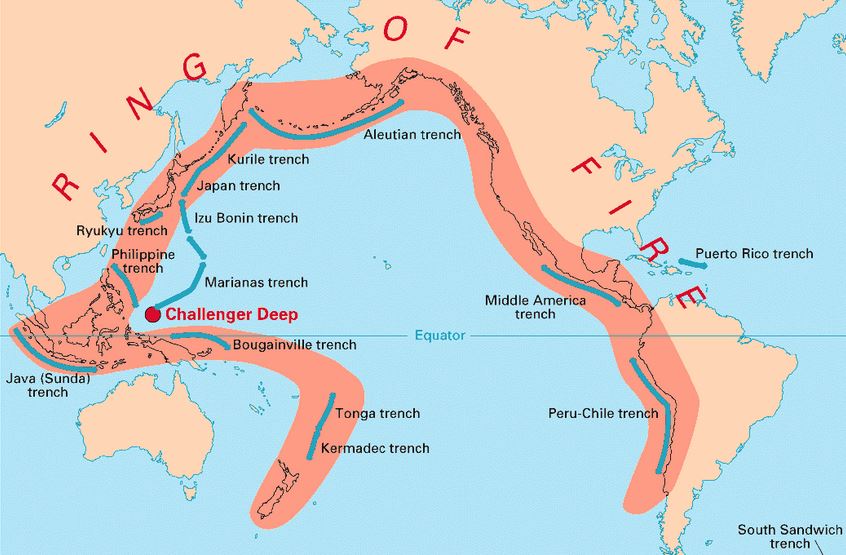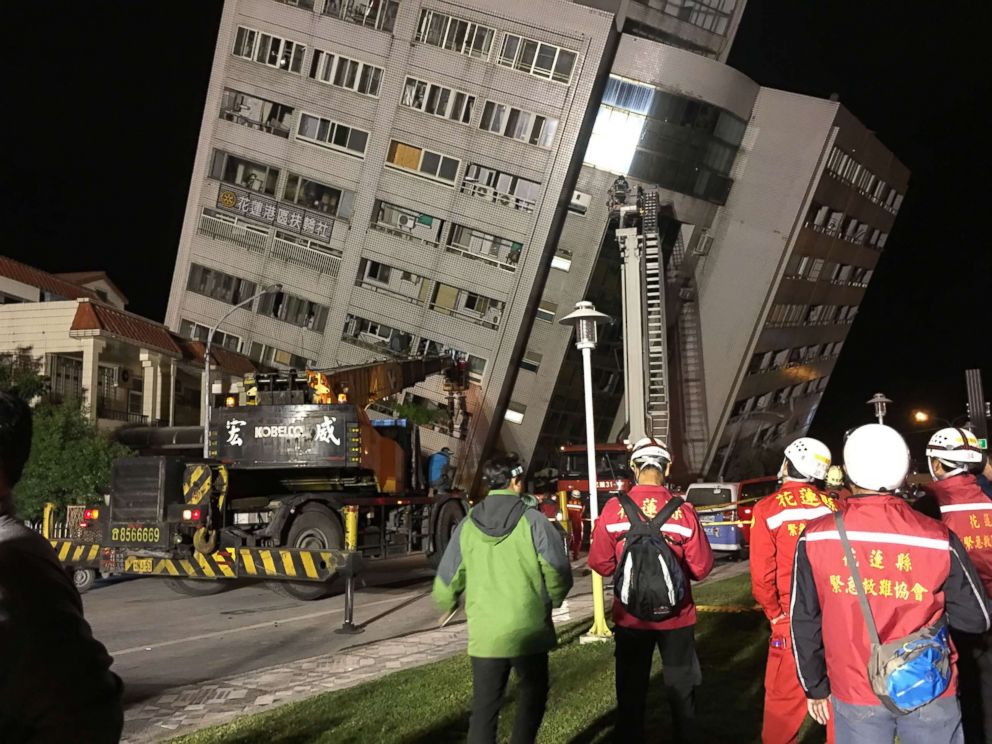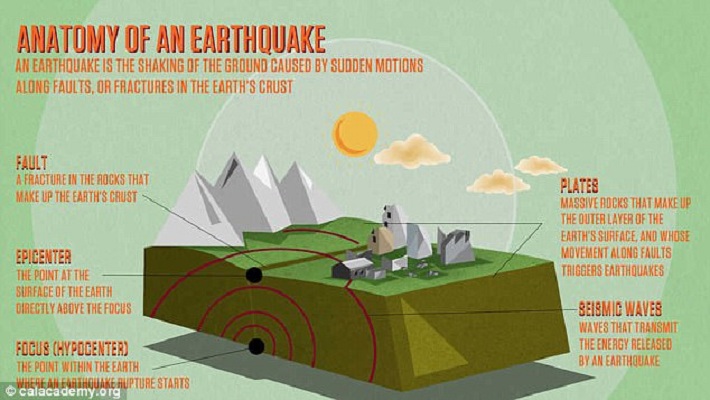Interesting
Recent Earthquakes Spark Fears of “A Big One” Within the Pacific Ring Of Fire
The Pacific Ring of Fire has always been the subject of immense concern when it comes to earthquakes and recent activity has sparked fears of the “big one” or a massive earthquake within the area.
Quakes have rocked Japan, Guam, and Taiwan and researchers in California are saying that aftershocks can happen, which will produce cluster of tremors on the margins of the area where the quakes have taken place.
The past few weeks have seen earthquakes occurring the Ring of Fire, a horseshoe-shaped geological disaster zone.
They also spoke about the possibility of a massive earthquake happening, the “big one” in the immediate area.
The study, which was published in the Science Advances journal, analyzed 101 major earthquakes between 1990 and 2016 that happened around the Pacific Ring of Fire.
Thorne Lay, professor of Earth and planetary sciences at UC Santa Cruz, told MailOnline:
“This intuition has been challenged by statistical treatments of seismic data that indicate that, based on the clustering of earthquakes in space and time, the area that has just slipped is actually more likely to have another failure.”
“The truth appears to be more nuanced.”
“Yes, the area that slipped a lot is unlikely to slip again, as the residual stress on the fault has been lowered to well below the failure level, but the surrounding areas have been pushed toward failure in many cases, giving rise to aftershocks and the possibility of an adjacent large rupture sooner rather than later.”
“It is possible (has been observed) that dynamic stresses from large earthquake can trigger relatively widespread earthquake activation clustered in time.”
A 6.4 magnitude earthquake shook Taiwan, leaving 17 dead and at least 180 injured.
“Seismologists look for effects of such long-range earthquake interactions regularly now.”
“Taiwan, Guam and Japan are far apart relative to the static stress interactions, but one could examine the seismic shaking from an earlier event in the region of a later event to see if small earthquakes were triggered as the seismic waves went by which could have led to a cascade of failures culminating in a larger event.”
“Until that type of analysis is done, causal connection between the events is very speculative.”
“Earthquakes are happening frequently in the Ring of Fire, and some apparent space-time clustering could arise from purely random (non-interacting) activity.”
“The most “predictable” earthquakes are nearby aftershocks; after a large event, seismologists have decent statistical models that indicate how many and what size aftershocks are likely to occur for space-time windows around the source.”
“But, the models are not sophisticated enough to tell us whether one of those aftershocks will be “unusually” big, giving a second large event comparable to or larger than the first.”
Lay and the other seismologists used advanced slip-imaging methods applied to recent earthquakes which have a magnitude 7 or greater. They discovered that most aftershocks happen on the margins of the area that slipped in the main earthquake.
This is how earthquakes happen.
“This produces a halo of aftershocks surrounding the rupture and indicates that the large-slip zone is not likely to have immediate rerupture,” Lay said.
The study also suggests that a large earthquake can take place in the vicinity if there are unusually intense aftershocks that happened.
Recently, a 6.4 scale quake happened on the east coast of Taiwan. In Guam, a series of tremors happened with magnitudes 5.7, 5.6, 5.4 and 4.9. Three earthquakes shook Japan since February 11, with 4.8 and 4.5 magnitudes.
But such activities within the Pacific Ring of Fire is normal, according to scientists. Toshiyasu Nagao, head of Tokyo-based Tokai University’s Earthquake Prediction Research Centre, said that “The Pacific Rim is in a period of activity.”
Meanwhile, Dr Janine Krippner, a volcanologist at Concord University in Athens, West Virginia, said:
“In terms of volcanic history, however, the current activity is still regarded as normal.”
“It’s not referred to as the “ring of fire” because it sits there doing nothing … it is normal to have so much activity.”
In January, at least four natural disasters have occurred in the Pacific Rim. Alaska was hit by a 7.9 magnitude earthquake. Indonesia had a 6.4 quake. Mount Kusatsu-Shirane in Japan erupted.
In the Philippines, Mount Mayon spewed lava 600 metres (1,970 ft) into the air, making thousands of people evacuate.
There are some researches who do not agree that these events were related.
Professor Chris Elders, a geologist at Curtin University in Perth, Australia, commented:
“There’s not really likely to be any connection.”
“While they do indeed have the same origin – the Ring of Fire – these recent events are a coincidence.”
“The region itself is a breeding ground for seismic activity.”

-
OMG6 years ago
Man Iced Neighbor Who Repeatedly Asked Him “When Are You Getting Married?”
-
Interesting7 years ago
The Secret Meaning of Anklets And Why Some Wives Wear Them
-
Interesting7 years ago
Waking Up Between 3 to 5 AM Could Mean You’re Experiencing Spiritual Awakening
-
Interesting6 years ago
Pork Fat Is Officially One of the World’s Most Nutritious Foods






















